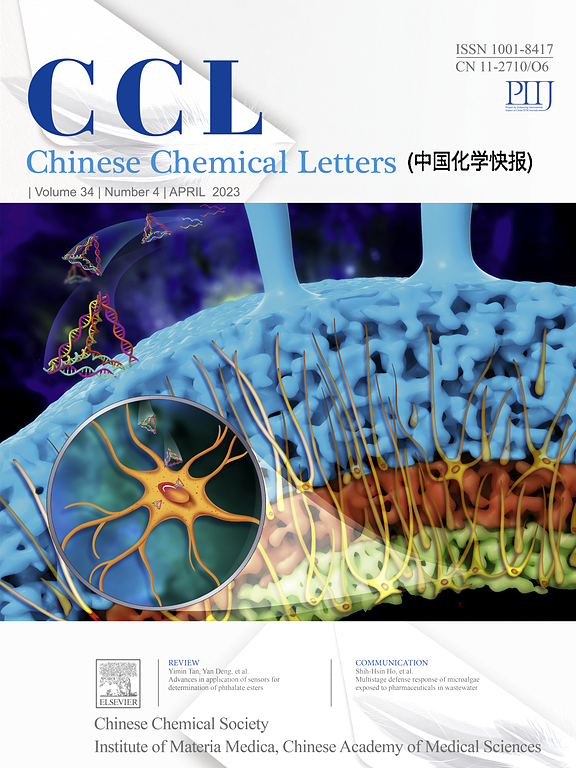Amphibian-inspired conductive ionogel stabilizing in air/water as a wearable amphibious flexible sensor for drowning alarms
IF 9.4
1区 化学
Q1 CHEMISTRY, MULTIDISCIPLINARY
引用次数: 0
Abstract
Gel-based sensors have provided unprecedented opportunities for bioelectric monitoring. Until now, sensors for underwater applicants have remained a notable challenge, as most sensors work effectively in air but swell underwater leading to functional failure. Herein, we introduce an innovative amphibian-inspired high-performance ionogel, where multiple supramolecular interactions in the ionogel's network confer good stretchability, elasticity, conductivity, and the hydrophobic C-F bonds play a key role in diminishing water molecule hydration and provide outstanding environmental stability. These unique properties of ionogels make them suitable as wearable amphibious flexible sensors, and the sensors are capable of highly sensitive and stable human motion monitoring in air and underwater. Integration of the designed sensor into an artificial intelligence drowning alarm system, which recognizes the swimmer's movement status by monitoring the amplitude and frequency, especially in the drowning status for real-time alarms. This work provides novel strategies for motion recognition and hazard monitoring in amphibious environments, meeting the new generation of wearable sensors.

求助全文
约1分钟内获得全文
求助全文
来源期刊

Chinese Chemical Letters
化学-化学综合
CiteScore
14.10
自引率
15.40%
发文量
8969
审稿时长
1.6 months
期刊介绍:
Chinese Chemical Letters (CCL) (ISSN 1001-8417) was founded in July 1990. The journal publishes preliminary accounts in the whole field of chemistry, including inorganic chemistry, organic chemistry, analytical chemistry, physical chemistry, polymer chemistry, applied chemistry, etc.Chinese Chemical Letters does not accept articles previously published or scheduled to be published. To verify originality, your article may be checked by the originality detection service CrossCheck.
 求助内容:
求助内容: 应助结果提醒方式:
应助结果提醒方式:


